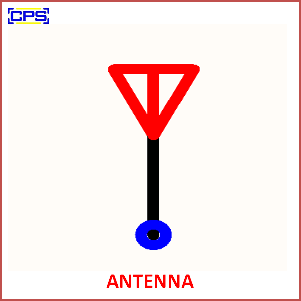An antenna is a device used to transmit or receive electromagnetic waves, primarily radio waves. It serves as an interface between a guided wave (in a transmission line) and a free-space wave (in the atmosphere).

Key Features of an Antenna:
- Transmission: Converts electrical signals into electromagnetic waves that can propagate through space.
- Reception: Captures electromagnetic waves from the atmosphere and converts them into electrical signals for processing.
- Types:
- Wire Antennas: e.g., dipole, monopole.
- Aperture Antennas: e.g., parabolic reflectors, horn antennas.
- Array Antennas: e.g., phased array, Yagi-Uda.
- Specialized Antennas: e.g., patch antennas, helical antennas.
- Parameters:
- Frequency Range: Determines the range of signals it can handle.
- Gain: Measure of the antenna’s ability to direct energy in a specific direction.
- Radiation Pattern: Describes the directional distribution of radiated power.
- Polarization: Orientation of the electric field of the radiated waves.
Applications:
- Communication: In radio, television, and mobile networks.
- Navigation: Used in GPS and other location-based systems.
- Radar: Detecting objects and measuring their distance and speed.
- Broadcasting: For sending signals over long distances.
- Scientific Research: In astronomy and satellite communication.
Antennas are critical components in wireless communication systems, enabling the transmission and reception of information across distances.
